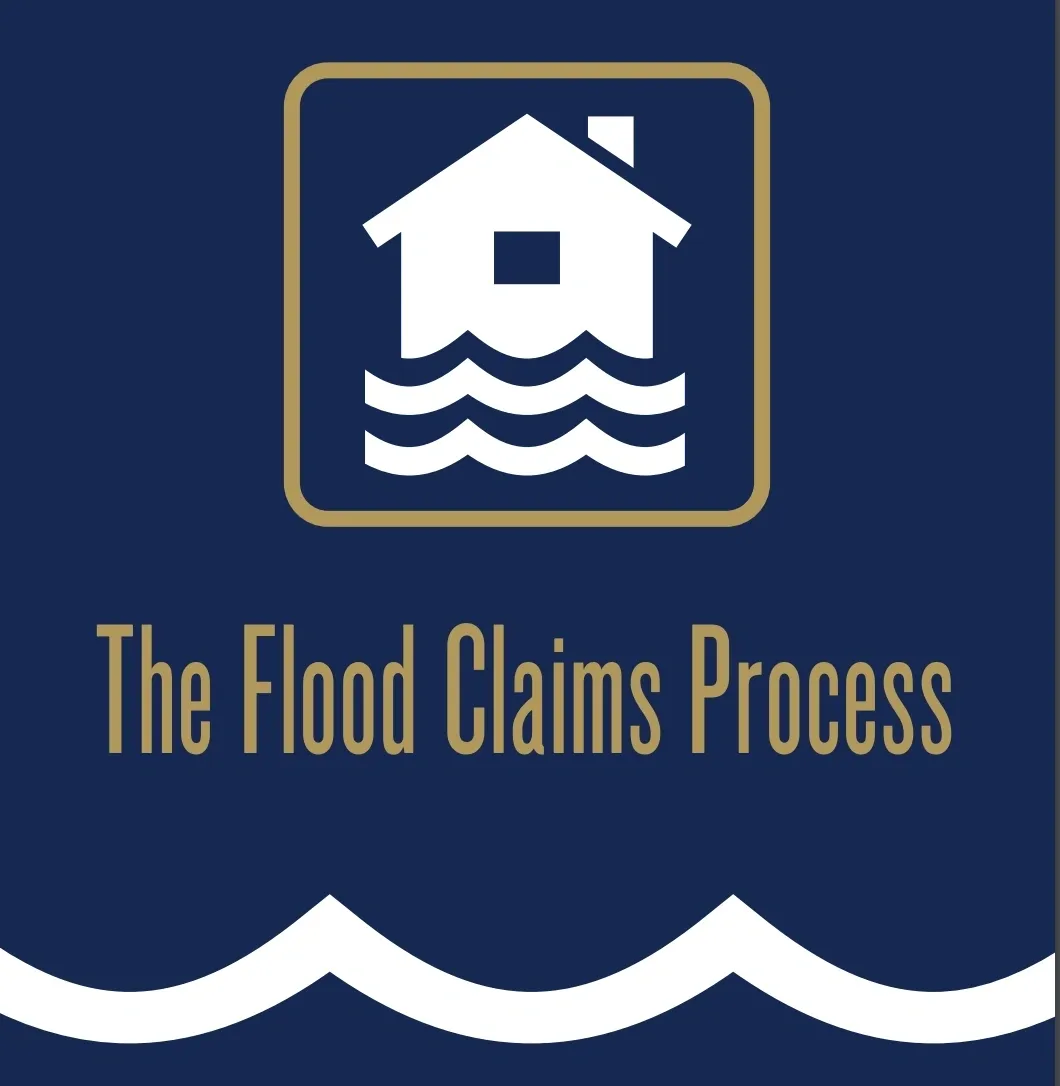Your policy requires you to give prompt written notice of your loss. Generally, your claim adjuster will contact you within 24-48 hours after you report your claim.
However, depending on local conditions and the severity of flooding, it may take longer. When reporting the claim, ask about the availability of an Advance Payment to help you start recovering. Advance payments are deducted from the final claim payment.
The Flood Claims Process
1-877-MY-FL-CFO
(1-877-693-5236) www.MyFloridaCFO.com/Division/Consumers
The Flood Insurance Claims Process
Please note: The following guidance is based upon policies issued on behalf of and underwritten by the National Flood Insurance Program (NFIP). Policies issued and underwritten by insurance companies in the private market may incorporate different duties, procedures, time constraints, and coverage types and limits. Please review your policy carefully to fully understand its specific terms and conditions. If you have policy- related questions or require clarification of any contractual provision, please consult with your insurance agent or directly with the issuing insurance company.
CONTACT YOUR INSURANCE AGENT OR COMPANY TO REPORT THE CLAIM
Your policy requires you to give prompt written notice of your loss. Generally, your claim adjuster will contact you within
24-48 hours after you report your claim. However, depending
on local conditions and the severity of flooding, it may take
longer. When reporting the claim, ask about the availability of an Advance Payment to help you start recovering. Advance payments are deducted from the final claim payment.
Reporting the Claim: Find the toll-free phone number for your insurance company. If you need help finding your insurance carrier, please call the NFIP Call Center, at 1-800-427-4661. Representatives at the Call Center can tell you who your insurance provider is and how to contact them, if you’re not sure, as well as answer other questions you may have.
Be prepared to provide the following information when reporting your claim:
- The name of your insurance company;
- Your policy number;
- A phone number and/or e-mail address where you can be reached; and
- The name of any mortgage company(s) (if applicable).

PREPARE FOR YOUR INSPECTION
Prior to entering, make sure it’s safe to do so. Take photographs and videos of the damaged property, including items you plan to discard.
The photos and videos should document the structural damage; standing floodwater levels (both inside and outside); and damage to appliances, furniture and other items. Remember to do this before you move, remove or discard anything. Your adjuster will need evidence of the damage to your home and possessions to accurately complete your repair estimate.
- For items like washers and dryers, hot water heaters, kitchen appliances, televisions, and computers, make sure you take
a photograph of the make, model, and serial number.
- For your building items, keep some samples (swatches) and also photograph items like water-damaged carpet (and or other flooring), wallpaper, and drapes before disposing of them so you can show them to your adjuster during the inspection.
- After photographing content and items that pose a health risk, such as perishable food items, clothing, cushions, pillows, etc., immediately throw them away.
- Contact repair services if the building’s electrical, water, or HVAC systems are damaged. It’s important to consult your adjuster or insurance company before you sign any agreement/ contract with a cleaning or remediation contractor.
- Contact your community building department and floodplain administrator to get information about:
- Whether your property was substantially damaged;
- Tips on how to better protect or repair your home; and
- Obtaining a building permit. This is a very important so that the rebuild or repair is in compliance with local ordinances.
NOTE: Flood loss avoidance is a protective action you take to minimize flood damage and losses to your buildings and personal property
before a flood occurs.
Speak with your claims adjuster if you took loss- avoidance measures. National Flood Insurance Program policies will cover up to $1,000 in reasonable expenses incurred to protect your insured property, and up to $1,000 to move your insured property away.

WORK WITH YOUR ADJUSTER
When your claims adjuster arrives, they should show you their official identification (Driver’s License and Company ID or Flood Control Number [FCN card]). They should also provide you with their contact information, such as their name, email, phone number, the name of his/her adjusting firm, and its telephone number. When meeting with you, your adjuster should cover the following:
- An explanation of the NFIP Flood Claims Process.
- An inspection of your property—during which he/she will document the scope of the loss
by taking measurements and photos.
- An explanation of what an advance payment is and how or if you are eligible to receive one.
- Information about how you should present your loss to your insurance company and a discussion about your policy coverage.
Other things to know, do and or discuss with your adjuster:
- Only the insurance carrier, not the adjuster, has the authority to determine whether your claim is covered.
- Be sure to provide your current mailing address and phone number if you are displaced.
- Ask your adjuster about Increased Cost of Compliance.
- The adjuster should never ask you for money
or collect your deductible amount.
At the end of your inspection, your adjuster should provide you with information about what you need to do and what will happen next.
DOCUMENT YOUR LOSS AND RECEIVE PAYMENT
Your adjuster will document your flood damage for the claim. Here are some things you can do to ensure the claims process goes smoothly:
- Speak with your agent about your insurance policy and read the Claims Handbook.
- Provide the photos and videos of your flood loss to your adjuster. It can be helpful to organize these by room.
- The adjuster will work with you to submit an estimate of your flood loss. Be sure you ask your insurance company about any important deadlines you need to meet. This will help ensure you receive a claim payment that reflects your flood loss, within your policy limits.

CLEAN-UP AND MOLD: YOUR RESPONSIBILITIES
Please note that it is your responsibility to do all you can to prevent the growth and spread of mold. Learn about clean-up and mold remediation. NFIP flood insurance policies will not cover mold damage if a policyholder fails to take action to prevent the growth and spread of mold.
In some instances, it’s simply not possible for a policyholder to gain access to the property and clean up and prevent the formation of mold. In these instances, mold damage may be covered when:
- A legally authorized official has banned entrance into the area (possibly as a result of downed trees, downed power lines, washout/destruction of roadways, or any other officially sanctioned reason restricting entrance); and or
- Floodwaters remain around the home or in the area impeding the policyholder’s ability to inspect and maintain the insured property.
REGISTER FOR DISASTER ASSISTANCE
In addition to filing a flood claim, when there is a Presidential Disaster Declaration you’re encouraged to register for Federal disaster assistance by calling toll-free 800-621-3362 (800-462-7585 TTY), or by applying online at DisasterAssistance.gov. Disaster assistance may be
available for things like Additional Living Expenses that are not covered by your policy.
BEFORE & AS YOU MAKE REPAIRS/PURCHASES
- Obtain a building permit before making structural repairs. This is very important to ensure the repairs are compliant with local ordinances.
- Keep receipts and photos of replaced or repaired property in the event the dwelling floods again resulting in another claim.
YOUR PROPERTY MAY BE
VISITED BY MULTIPLE OFFICIALS
Learn about various visitors who may come to your property after a flood, in Who’s Knocking at Your Door? Keep the following in mind:
- More than one insurance claim adjuster may visit your property. Adjusters are trained to distinguish the cause of specific damage to your home if you had multiple causes of loss (for example, flooding and wind or flooding and fire).
- If your adjuster has questions about complicated damage, they may request assistance from an engineer or other experts. These experts can help determine the cause and extent of damage.
- Your adjusters may need to consult with each other during the adjustment of your claims. If they determine you had multiple causes for your damage, you will have to go through more than one claims processes because you are dealing with two or more policies which cover different perils.

ADDITIONAL HELPFUL RESOURCES
- The Claims Handbook can help you as you go through the process of filing and settling your flood insurance claim.
- This Disaster Survivors Checklist can help as you go through the NFIP flood claims process.
- The Summary of Coverage can help NFIP policyholders understand what is and isn’t covered by their policy, and how items are valued at the time of loss.
- Learn about Increased Cost of Compliance and how it can help mitigate properties that are substantially or repetitively damaged by flooding.
- Find additional publications and other resources to support policyholders before, during and after a flood.
- Learn how to Rebuild Back Safer and Stronger after a flood.
- Read about Voluntary Organizations Active in Disasters.
- Learn about reporting disaster fraud to FEMA and to Fraud Free Florida.
- Call the Florida Insurance Consumer Helpline at 1-877-MY-FL-CFO (1-877-693-5236) and out of state callers at (850) 413-3089.
1-877-MY-FL-CFO
(1-877-693-5236) www.MyFloridaCFO.com/Division/Consumers


